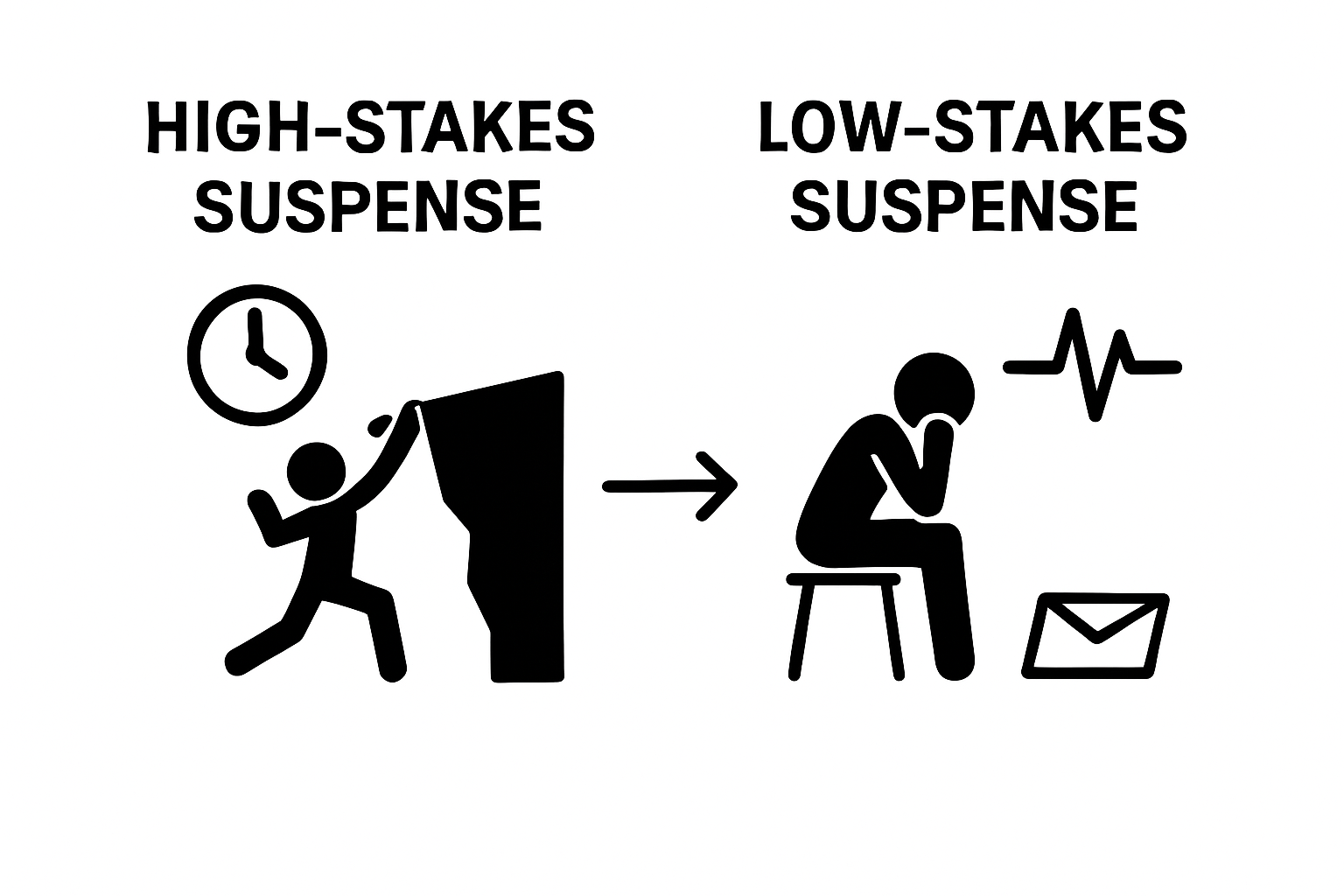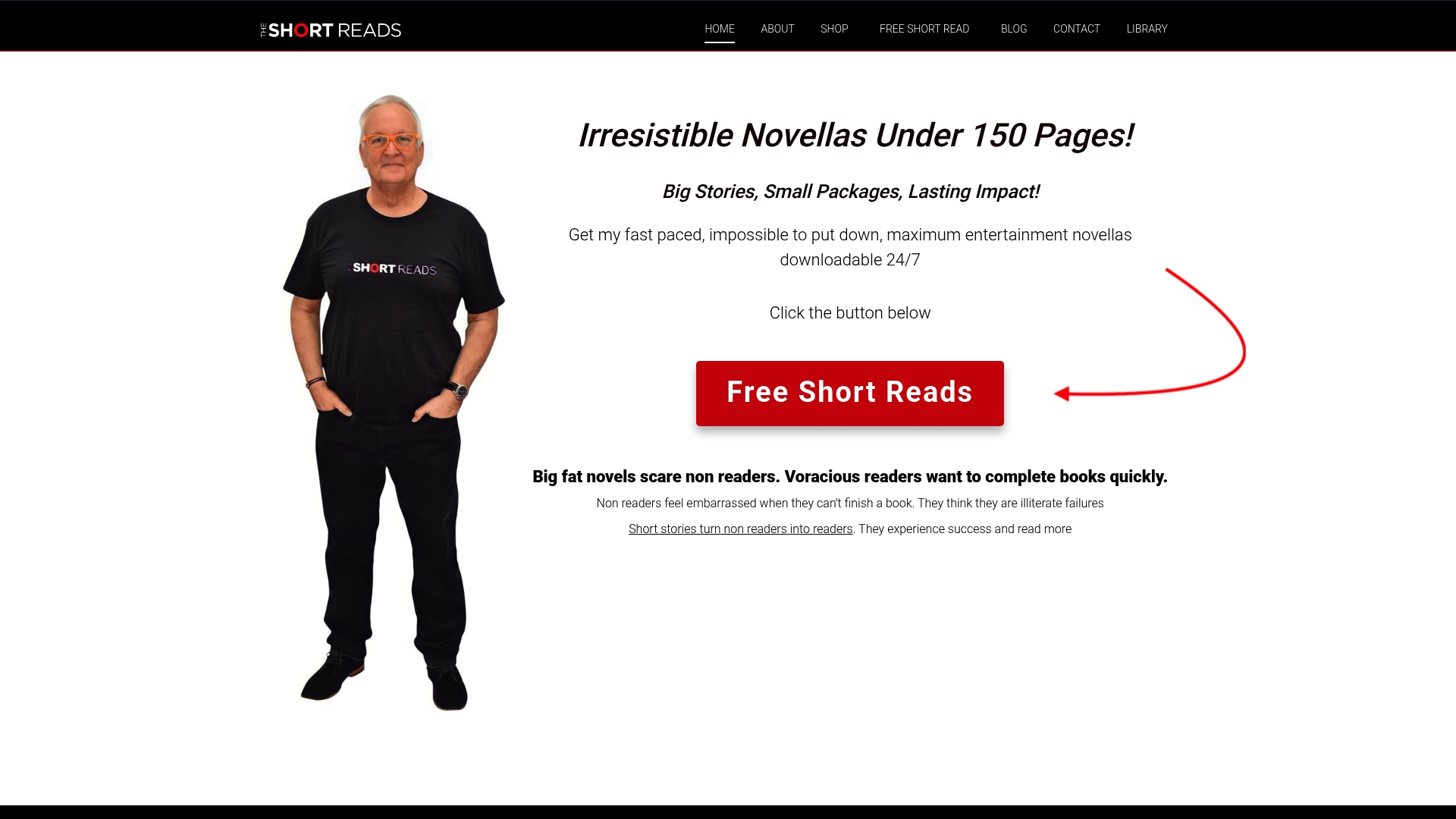Understanding Why Suspense Matters in Storytelling

Suspense hooks millions of readers and keeps them glued to stories, but it does much more than just make us anxious about what might happen next. In fact, research shows suspense triggers stress hormones like cortisol and activates the brain’s emotion centers. Most people think suspense is only about nail-biting twists or shocking endings, but the real secret is how it quietly manipulates your own emotions and turns you from a watcher into a participant.
Table of Contents
- What Is Suspense And How Does It Function In Stories?
- Why Does Suspense Create Emotional Connections With The Audience?
- How Suspense Drives Plot Development And Keeps Readers Engaged
- What Are The Psychological Effects Of Suspense On Readers?
- How Does Suspense Impact Storytelling Across Different Genres?
Quick Summary
| Takeaway | Explanation |
|---|---|
| Create suspense by withholding information | Deliberately hold back details to heighten reader tension and curiosity about outcomes. |
| Use character vulnerability to engage readers | Relatable character challenges foster emotional investment, prompting readers to care about the story. |
| Leverage neurochemical responses for emotional connectivity | Trigger anticipation and stress hormones to enhance reader engagement and create immersive experiences. |
| Implement strategic plot complications | Introduce unexpected twists to maintain momentum and audience interest throughout the narrative. |
| Adapt suspense techniques across genres | Utilize universal suspense mechanisms applicable in various storytelling styles to reach diverse audiences. |
What is Suspense and How Does It Function in Stories?
Suspense represents a powerful narrative technique that keeps readers intensely engaged by creating psychological tension and anticipation about potential outcomes. At its core, suspense is an emotional state where audience members experience heightened curiosity, anxiety, and uncertainty about what might happen next in a story.
The Psychological Mechanics of Suspense
Suspense functions through deliberate storytelling strategies that manipulate audience expectations and emotional responses. According to research from Stanford Encyclopedia of Philosophy, suspense is a complex psychological experience that transcends simple uncertainty. Writers create suspense by strategically withholding information, introducing potential risks, and constructing narrative scenarios where characters face significant challenges.
Key psychological elements that generate suspense include:
- Emotional investment in character outcomes
- Strategic information revelation
- Potential for unexpected plot developments
- Implied but unresolved narrative threats
Crafting Narrative Tension
Successful suspense creation involves carefully balancing audience knowledge and anticipation. Storytellers use multiple techniques to build tension, such as:
- Introducing high-stakes situations
- Creating time pressure for characters
- Establishing potential negative consequences
Interestingly, suspense can persist even when audiences understand potential outcomes. This phenomenon suggests that emotional engagement matters more than pure unpredictability. Read more about advanced suspense techniques in our guide on understanding the role of suspense in fiction.

Ultimately, suspense transforms passive reading into an active, emotionally charged experience where readers become deeply connected to narrative progression, eagerly anticipating each subsequent plot development.
Why Does Suspense Create Emotional Connections with the Audience?
Suspense serves as a powerful psychological mechanism that transforms passive storytelling into an immersive emotional experience, compelling audiences to form deep connections with narrative elements and characters. By strategically engaging human neurological and emotional responses, suspense bridges the gap between fictional scenarios and genuine human experiences.
The Neurochemical Response to Narrative Tension
When audiences encounter suspenseful narratives, their brains undergo complex neurochemical reactions. According to research from the Greater Good Science Center at UC Berkeley, suspense triggers the release of cortisol, a stress hormone that heightens audience alertness and emotional engagement. This physiological response creates a visceral connection that goes beyond intellectual understanding.
Key neurological processes that generate emotional investment include:
- Activation of mirror neurons simulating character experiences
- Increased production of stress and empathy hormones
- Enhanced neural pathways for emotional processing
- Heightened sensory and cognitive attention
Empathy and Character Connection
Suspense fundamentally operates by encouraging audiences to emotionally invest in character outcomes. When storytellers construct scenarios with meaningful stakes, readers unconsciously project themselves into narrative challenges. Learn more about crafting compelling short story structures that maximize this emotional connection.
Emotional connection occurs through several critical mechanisms:
- Creating relatable character vulnerabilities
- Establishing clear narrative consequences
- Generating uncertainty about potential outcomes
- Presenting morally complex scenarios
Ultimately, suspense transforms storytelling from a passive experience into an active emotional journey, where audiences become psychological participants rather than mere observers. By triggering complex neurological responses and empathetic engagement, suspense creates profound connections that resonate far beyond the immediate narrative context.

How Suspense Drives Plot Development and Keeps Readers Engaged
Suspense functions as a narrative engine that propels storytelling forward, transforming linear plot progression into a dynamic, engaging experience. By strategically manipulating audience expectations and emotional investment, suspense becomes a critical mechanism for maintaining reader attention and driving narrative momentum.
Narrative Momentum and Information Control
Plot development through suspense relies on carefully controlled information revelation. According to research published in Psychological Science, suspenseful narratives increase audience attention by creating calculated zones of uncertainty that compel readers to continue reading.
Key strategies for maintaining narrative momentum include:
- Introducing strategic plot complications
- Withholding crucial narrative information
- Creating cascading narrative questions
- Establishing progressive story stakes
Structural Techniques for Sustained Engagement
Storytellers employ multiple structural techniques to maintain reader interest. Effective suspense creation involves more than simply concealing information. Explore advanced mystery writing techniques in our comprehensive guide to understand nuanced narrative strategies.
Engagement techniques that drive plot development comprise:
- Introducing unexpected narrative shifts
- Developing multilayered character motivations
- Creating interconnected narrative threads
- Establishing progressive narrative tension
Ultimately, suspense transforms plot development from a mechanical sequence of events into a dynamic, emotionally charged journey. By strategically balancing revelation and mystery, storytellers create narrative experiences that pull readers inexorably forward, transforming passive reading into an active, immersive exploration of unfolding events.
What Are the Psychological Effects of Suspense on Readers?
Suspense operates as a sophisticated psychological mechanism that profoundly transforms readers emotional and cognitive experiences. By triggering complex neurological responses, suspense transcends mere storytelling and becomes an intricate interaction between narrative and human psychological processing.
Neurological Activation and Emotional Arousal
When readers encounter suspenseful narratives, their brains undergo remarkable neurological transformations. According to research from Frontiers in Psychology, suspense directly stimulates emotion-related brain regions, particularly the amygdala, creating a heightened state of psychological engagement.
Key neurological responses triggered by suspense include:
- Increased production of stress hormones
- Enhanced neural pathway activation
- Heightened sensory perception
- Accelerated cognitive processing
Psychological Defense Mechanisms and Narrative Immersion
Readers unconsciously deploy sophisticated psychological defense mechanisms when experiencing suspenseful narratives. These mechanisms transform reading from a passive into an active psychological experience. Explore more about the intricacies of psychological narratives in our comprehensive thriller guide.
Psychological defense mechanisms activated during suspenseful reading involve:
- Emotional projection onto characters
- Vicarious risk assessment
- Subconscious threat evaluation
- Narrative scenario simulation
Ultimately, suspense creates a unique psychological landscape where readers simultaneously experience safety and danger, engagement and detachment. By carefully manipulating narrative tension, storytellers invite readers into complex emotional territories that challenge, stimulate, and transform their psychological understanding of human experience.
To clarify the different psychological and neurological effects suspense has on readers, the following table summarizes the main mechanisms and their impact as described in the article.
| Psychological/Neurological Mechanism | Description | Impact on Reader Experience |
|---|---|---|
| Emotional Projection onto Characters | Readers subconsciously experience character emotions and risks | Deepened empathy and immersion |
| Activation of Mirror Neurons | Brain simulates character actions and emotions | Enhanced connection and realism |
| Increased Production of Stress Hormones | Suspense triggers cortisol and other stress responses | Heightened alertness and engagement |
| Vicarious Risk Assessment | Readers mentally evaluate threats as if facing them themselves | More intense suspense and tension |
| Heightened Sensory Perception | Brain becomes more receptive to story details during suspense | Greater narrative vividness |
| Subconscious Threat Evaluation | Continuous assessment of potential narrative dangers | Increased emotional investment |
| Narrative Scenario Simulation | Readers mentally simulate what may happen next | Sustained curiosity and anticipation |
How Does Suspense Impact Storytelling Across Different Genres?
Suspense functions as a universal narrative technique that transcends genre boundaries, serving as a fundamental mechanism for engaging audiences across diverse storytelling formats. By manipulating narrative tension and emotional anticipation, suspense creates powerful connections between readers and stories, regardless of the specific genre framework.
Genre Adaptability and Narrative Tension
Suspense demonstrates remarkable versatility in generating audience engagement across multiple storytelling styles. According to research from the Stanford Literary Lab, suspense techniques have consistently evolved across different genres, from Gothic fiction to contemporary science fiction, proving its adaptive narrative power.
Key genre adaptation strategies include:
- Modifying tension generation techniques
- Adjusting narrative revelation pacing
- Transforming character threat dynamics
- Reimagining narrative complexity
Psychological Mechanisms of Cross Genre Engagement
The underlying psychological mechanisms of suspense remain consistent across genre boundaries. Stories leverage similar emotional triggers to maintain audience attention, whether in a romance, thriller, or science fiction narrative. Explore the nuanced terminology of genre storytelling in our comprehensive guide.
Universal suspense mechanisms across genres comprise:
- Creating anticipatory emotional states
- Establishing narrative stakes
- Developing character vulnerability
- Introducing unpredictable narrative elements
Ultimately, suspense represents a sophisticated storytelling language that communicates beyond genre limitations. By understanding and manipulating fundamental human psychological responses, storytellers can craft compelling narratives that resonate across diverse audience expectations and narrative frameworks.
This table compares how suspense adapts across genres, outlining both the general approach and the key techniques unique to each style as described in the article.
| Genre | Suspense Approach | Key Techniques Used |
|---|---|---|
| Thriller | Emphasizes immediate threat | High-stakes situations, time pressure |
| Romance | Focuses on emotional uncertainty | Relatable vulnerability, character secrets |
| Science Fiction | Explores unknown futures/technology | Revelation pacing, unpredictable elements |
| Gothic Fiction | Highlights atmosphere and dread | Implied threats, narrative complexity |
| Mystery | Centers around information control | Withheld clues, progressive stakes |
| Contemporary Fiction | Uses real-life tensions/risks | Morally complex scenarios, layered motivations |
Experience the Thrill of Suspenseful Reading—Start Your Short Story Journey Now
Do you ever find yourself eager for an emotional rush but struggle to stay engaged with long books? The article explained how suspense transforms reading into an active, pulse-quickening experience—yet many readers miss this thrill because traditional novels feel overwhelming or time-consuming. At TheShortReads.com, we specialize in short fiction that captures the exact tension, anticipation, and excitement discussed in our guide on understanding why suspense matters in storytelling. With expertly crafted stories under 150 pages, you get that impactful emotional connection without the commitment of a full-length novel.

Ready to feel every twist and turn? Explore our collection of suspense-driven short stories and rediscover genuine excitement in reading. Take the first step now—visit TheShortReads.com and download a free story. Let suspense draw you in and see how a quick read can spark your passion for stories today.
Frequently Asked Questions
What is suspense in storytelling?
Suspense is a narrative technique that creates psychological tension and anticipation in readers, keeping them engaged by making them curious about potential outcomes in the story.
How does suspense impact emotional engagement with characters?
Suspense encourages readers to emotionally invest in characters by creating relatable vulnerabilities and meaningful stakes, fostering a deeper connection between the audience and narrative elements.
What techniques do writers use to create suspense?
Writers create suspense by introducing high-stakes situations, withholding crucial information, manipulating audience expectations, and presenting characters with significant challenges that generate uncertainty about outcomes.
How does suspense vary between different storytelling genres?
Suspense is adaptable across genres, with techniques modifying to fit the narrative style—whether in romance, thriller, or science fiction—while maintaining similar psychological mechanisms that engage audiences.
Recommended
- Understanding the Role of Suspense in Fiction
- Short Mystery Writing Tips for Captivating Tales
- Understanding Short Story Structure
- Understanding Mystery Fiction Terminology Explained
- Understanding Content Storytelling for Business Growth
- What is a Season Premiere? Understanding Its Impact and Importance
